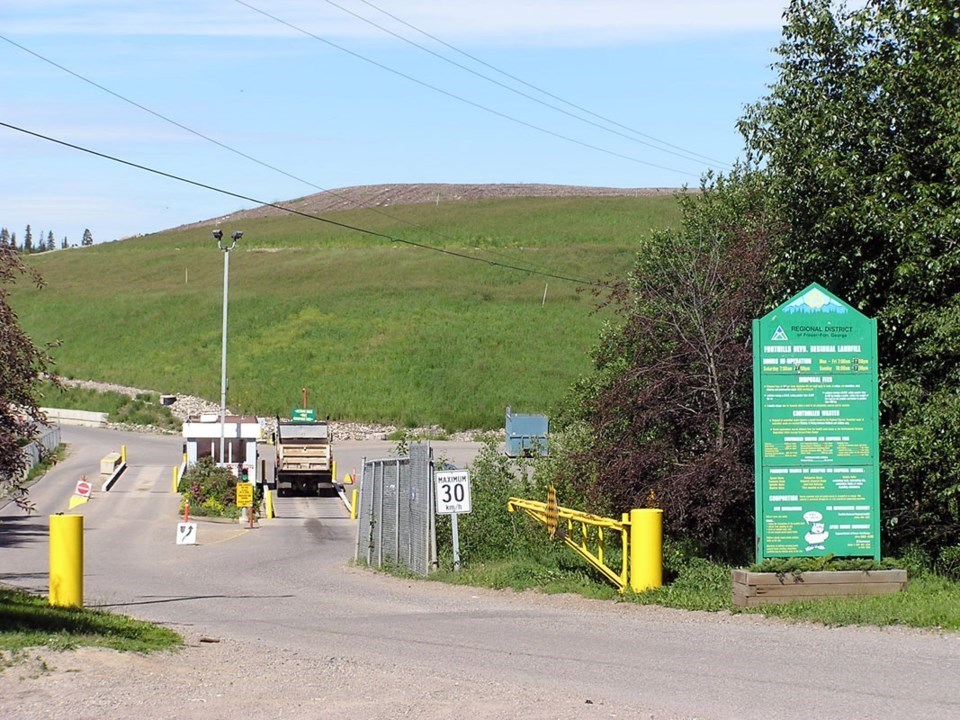Preparation work for a new cell at the Foothills Boulevard Regional Landfill is progressing and the first section is expected to open in 2027.
A progress update on the landfill was given at the final 2024 committee of the whole meeting for the Regional District of Fraser-Fort George on Dec. 19.
A cell is a single section of a landfill that is eventually covered over once full of solid waste.
The Foothills landfill collects 98 per cent of municipal solid waste in the regional district, with the remaining two per cent going to smaller landfills in Mackenzie and Legrand. A regional bylaw prohibits waste from outside the region being deposited in the landfill.
Originally opened by the City of Prince George in 1976, the former gravel pit was placed under the ownership of the regional district in 1994.
The existing Cell 1 is expected to reach the end of its life in spring 2028.
Cell 2, its replacement, is being developed in two phases: 2A and 2B.
In 2024, the area earmarked for cell two was cleared, grubbed and logged. A land survey outlining the area’s topography was also completed along with a drilling site investigation, a cost estimate and a development design brief outlining regulatory processes and site-specific considerations.
As of the meeting, the estimated cost of the earthworks for Cell 2A was $7.244 million and the actual construction of the cell $8.421 million for a total estimated cost of $15.665 million.
A schematic design will be done by next summer and the construction contract for the earthworks will be awarded. A detailed design will be completed that fall with the final design done in late 2025 or early 2026.
The earthworks and cell construction will be done in 2026 and 2027, with an anticipated opening date for Cell 2A of fall 2027.
Currently, there’s a 27-foot difference between the highest and lowest points of what will become Cell 2.
Regional district representatives have met with representatives from the BC Ministry of Environment and Parks and an application was submitted this month to have cell two added to the landfill’s operations certificate. More updates to that certificate will be filed in 2025.
The regional district will also need to submit a new design, operations and closure plan in 2025.
Both portions of this new cell will be installed with a liner aimed at preventing waste products from leaching into the ground and the nearby environment. That liner will be made of geosynthetic clay and a high-density polyethylene geomembrane.
There will also be a collection system to gather any materials that would otherwise leech into the ground, known as leachate.
Representatives from engineering firm Tetra Tech told the regional directors at the meeting that the liner is at risk of being punctured by certain types of waste. To reduce the chance of that happening, a layer of wood chips or shavings will be placed at the bottom.
Then, for the initial part of Cell 2A’s lifespan, softer household materials will be placed at the bottom while sharper and heavier construction and demolition waste like rebar and two-by-fours will be placed in cell one.
Cell 2A is expected to have a lifespan of 10 years and 2B more than 10 years. An integrated landfill management plan completed in 2010 had predicted Cell 1 would be full by 2025 and Cell 2 by 2042.
“It’s quite possible that there will be 20 years of life between these two sites,” said Tetra Tech’s Michelle Jelinski.
The Tetra Tech representatives said they tried to account for possible trends, like population growth and possible waste diversion programs, like for organic waste.
In most years, 75,000 metric tonnes of waste is deposited in the landfill. However, the estimate for 2024 is closer to 70,000.
It was noted that the amount of waste deposited each year is tied more to construction cycles rather than population growth.
The reason that the new cell halves will only have a roughly 10-year life span, Jelinski said, is because they want to avoid having to front capital costs for a larger cell all at once. At the same time, they want to avoid having to build a new cell every year.
The other Tetra Tech representative, Michel Lefebvre, said the system being put in place to capture gas in the new landfill cell won’t start working for four to five years due to various factors.


